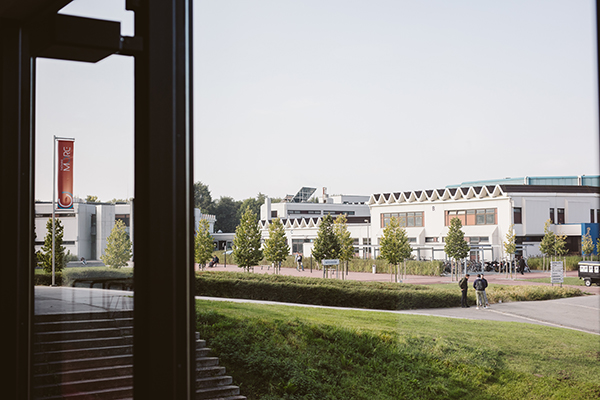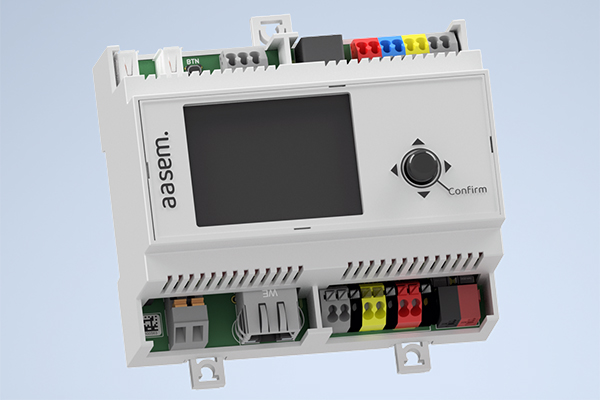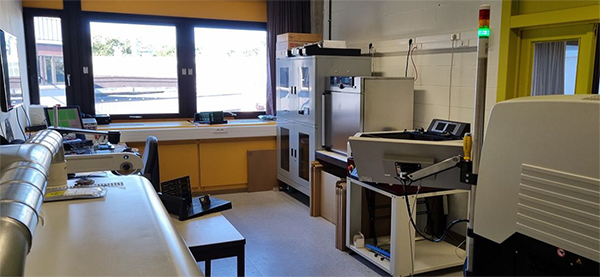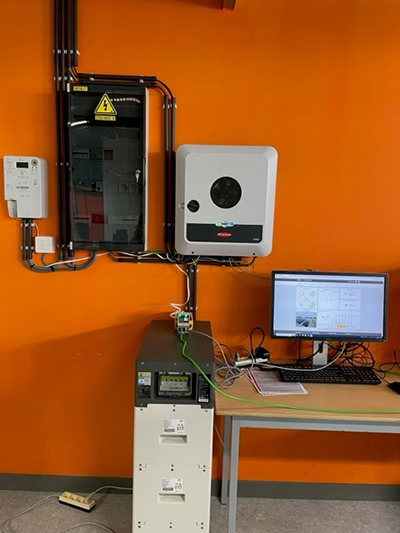
Jan Derua describes why Thomas More University of Applied Sciences developed an AI-assisted smart energy manager, and how it was done.
Thomas More University of Applied Sciences is the largest university for applied sciences in Flanders, Belgium, and is spread across eight locations. At Campus De Nayer in Sint-Katelijne-Waver, we have courses in Electromechanics, Automotive Technology, Design and Production Technology and Electronics/ICT. We are a KNX-certified Training Centre as well as a KNX Scientific Partner, and we do research and development in different areas including embedded systems, such as KNX.

A few years ago, the Flemish energy distribution operator decided to replace the traditional analogue energy meters with digital meters. Although these meters are called ‘smart meters’, they only have a communication port that allows for digital retrieval of metering data. Readily-available products to make these meters actually smart and to manage energy flows are almost all monitoring systems that only make consumption visible – they are not true energy management systems. Therefore, there is a need for real energy management systems, complemented by AI, that make these meters truly smart and self-learning. And since energy management requires a good communication system between sensors, actors and controllers, KNX is the obvious protocol of choice.
Scope of the project
The ultimate goal is to arrive at an AI Assisted Smart Energy Manager that makes it possible to control as many technologies and devices as possible in a residential environment. This manager should be self-learning and should support the user in achieving rational energy consumption without much worry. The intention is to be able to integrate this in both new and existing situations without the need for many modifications to the installation and without much financial impact. In addition, the project is not limited only to electrical energy flows, because a lot of energy can also be buffered and channelled at the thermal level.

Design and implementation
For communication with the KNX bus, the design was equipped with a chip developed in Belgium, namely the ONSEMI NCN5130. The KNX stack was therefore developed in-house.
The intention is to be able to visualise and control all applications already present in the home. Examples include the solar inverter, solar water heater, heat pump, smart plugs, and so on, without requiring much additional investment.
We chose to work with custom-made Linux distribution on reliable industrial hardware. Indeed, for reliability and durability reasons, solutions with Raspberry Pi or Arduino are not the best options. Bare Metal and Docker image were used for robust and dynamic integration, whilst programming is possible via Node Red, data logging is based on Influx, and Grafana is used for visualisation. This allows every conceivable integration.

Advantages of AI
The use of AI allows the home to be made smart without the need for additional programming or human intervention. The hardware on board is AI-ready, which means that there’s no Internet connection required for the processing of the AI. Only the weather forecast and the prediction of the power generation of the solar panels require an Internet connection. The AI part is still in development and needs to be tested further, but we are already achieving good results via Node Red.
Test cases
We developed three test cases. The first concerns a pretty large new nearly-energy-neutral house. Here the PV panels and the heat pump were integrated, as well as a battery for energy storage. In this instance, the focus is on optimising energy flows and especially on limiting consumption peaks because the tariffing in Flanders partly depends on the capacity tariff.
For the time being, during last September and October together, there was an energy cost saving of about EU370 due to the energy management and increase of self-consumption, and another saving of about EU10 per month due to peak shaving and avoidance of the capacity tariff.
The second test case concerns an older house where PV panels were installed, as well as a wood pellet system for heating and domestic hot water and a battery for energy storage. Control is via our aasem device, combined with the KNX installation. We don’t currently have enough figures for this installation to publish what the cost savings are, but we expect them to be impressive over the year.
The third test case concerns the KNX training and research lab, which was equipped with PV panels combined with a 7.5kWh battery and an EV charging station. By controlling it, the lab is self-sufficient.

Besides energy savings and comfortable control, the three test cases provide a mass of data that allows further training and optimisation of the AI.
Summary
The result of using our aasem device is very satisfactory both in terms of operation and data capture. The mass of data that was and still will be captured allows the AI part to be optimised even more. The design of the module allows easy integration into a standard distribution board and consumes very little power. In terms of future developments, we are thinking of expanding the device even further with KNX RF and implementing the KNX Secure stack.
Jan Derua MSc is a professor and researcher at Thomas More University of Applied Sciences, a KNX-certified Tutor, and a member of the board of KNX Belgium.












